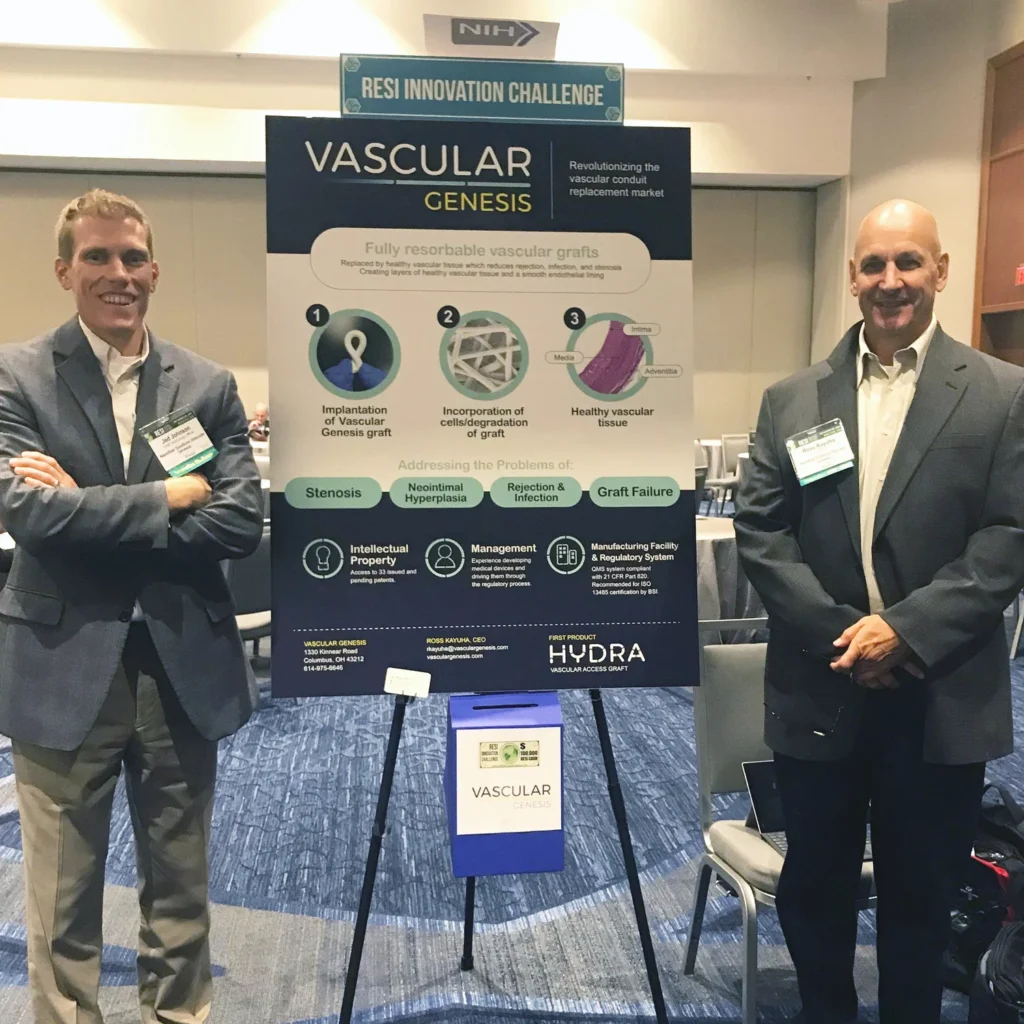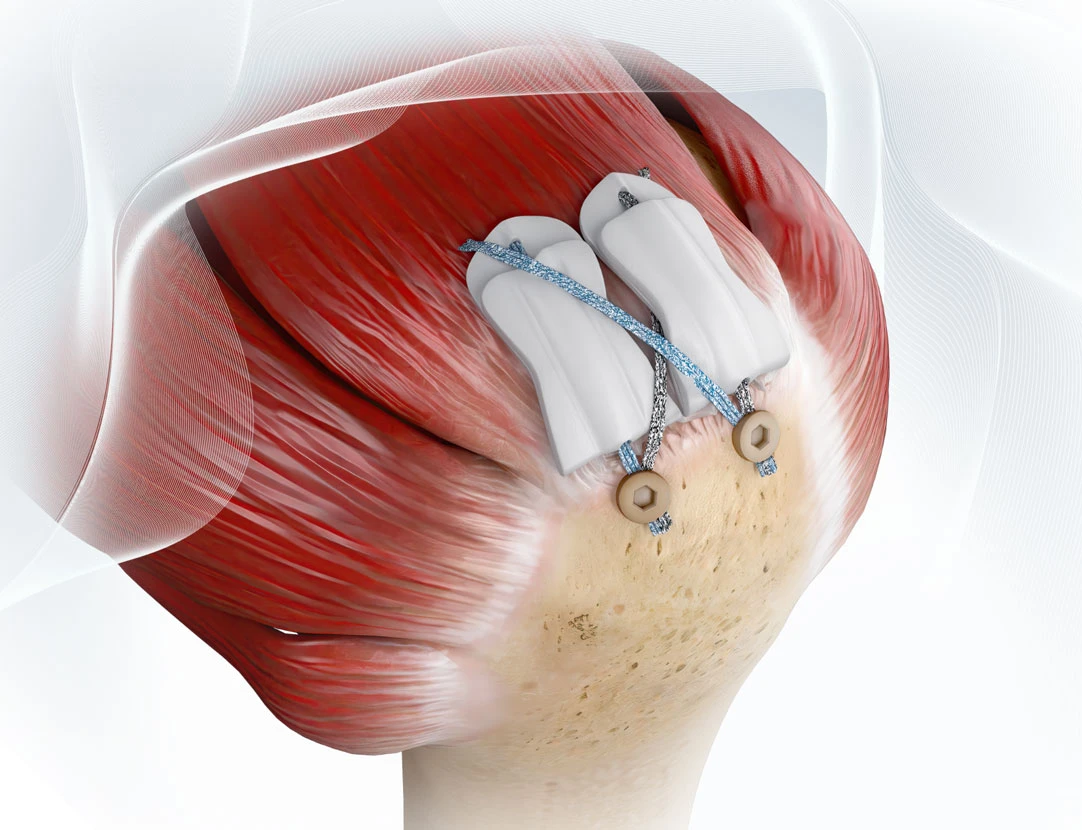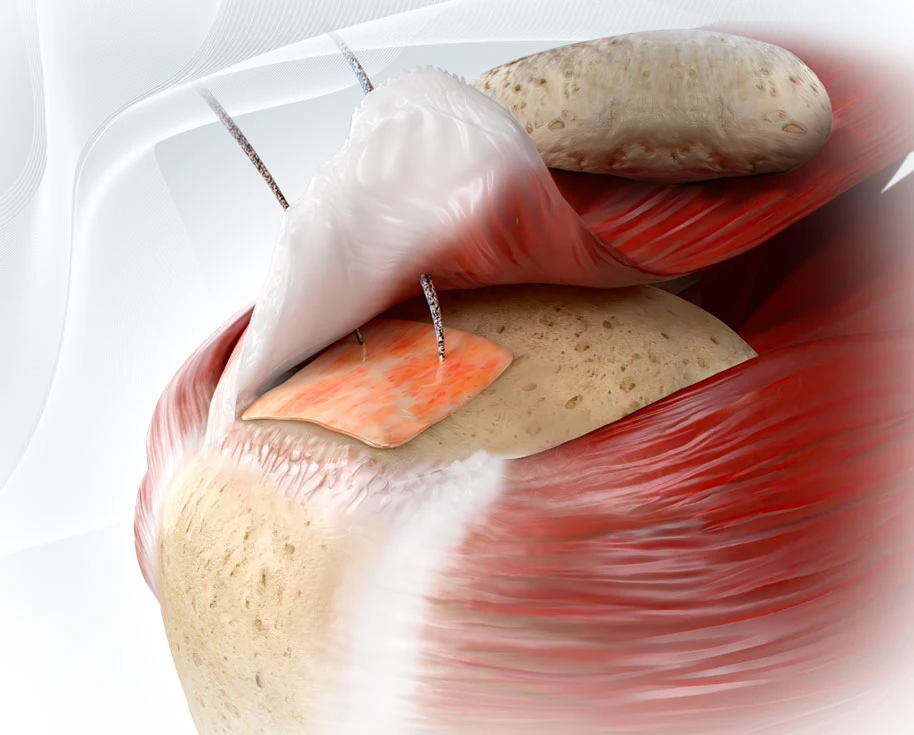For over 15 years, Nanofiber Solutions — co-founded by Dr. Jed Johnson, PhD — has advanced electrospinning technology to create scaffolds that guide functional tissue regeneration. From airway to vascular to orthopedic applications, their research has established that synthetic and electrospun bioresorbable scaffolds can integrate with host tissue, support the biologic environment during early healing phases, and resorb as the body remodels itself.
Check out a behind-the-scenes look at Nanofiber Solutions!
Electrospinning: Designing Tissue-Specific Healing
Electrospinning draws charged polymer solutions into nano-scale fibers, layered into a porous structure that mimics the native extracellular matrix (ECM). This scaffold architecture:
- Directs cell migration and alignment
- Enables early vascularization
- Provides mechanical stability before resorbing in healing-synchronized phases
At Atreon Orthopedics, these design principles underpin ROTIUM® bioresorbable scaffolds, made from PGA and PLCL fibers. The result: a synthetic implant that wicks and holds the patient’s own biologic factors at the tendon-bone interface, creating a biologically active environment for healing.
Evidence Across Anatomies: Airway, Vascular & Orthopedic Models
Airway Regeneration — Kreber et al., 2024 (Laryngoscope)
In a mouse model of resorbable electrospun nanofiber composite tracheal grafts, the team reported:
- >80% survival with no observed respiratory distress; all grafts patent at 2 weeks
- Rapid vascularization across scaffold pores
- Epithelial and basal cell regeneration comparable to native controls
- Material-specific degradation: PGA for rapid porosity, PLCL for prolonged stability, blends for balanced performance
These results indicate that electrospun scaffolds can promote neotissue formation without impeding regeneration. For more on this approach, see the Technology Overview.

Vascular Repair — Johnson et al., 2019 (Tissue Engineering Part A)
In preclinical large-animal models, small-diameter electrospun vascular grafts achieved:
- Complete patency in the study’s animal cohort during the evaluation period
- Rapid endothelialization
- Progressive fiber resorption replaced by organized collagen and elastin
- Maintained mechanical strength during tissue remodeling
This work demonstrated that scaffold architecture and resorption rates can be tuned to balance stability and biologic integration.
Orthopedic Biomechanics — Johnson et al., 2025 (JSES International)
A recent rotator cuff repair study evaluated nanofiber scaffolds placed at the tendon-bone interface and found:
- Demonstrated higher repair strength in preclinical testing compared to repairs without scaffolds (data on file)
- Higher load-to-failure values observed in mechanical testing (preclinical data) and reduced gap formation under cyclic loading
- Histology showing better organized collagen and restoration of native enthesis-like structure
- Potential benefits in chronic degeneration models, where tendon quality is compromised
These biomechanical and histologic findings align with Atreon’s clinical goal: improving tendon-bone integration without altering surgical workflow. For detailed procedural context, visit our Rotator Cuff Repair Solutions page.
From Multisystem Science to Tendon Repair
The ECM-mimicking fiber structures, supported by evidence from airway patency, vascular remodeling, and rotator cuff biomechanical enhancement, form the foundation of Atreon’s orthopedic technology. In rotator cuff and other tendon repairs, ROTIUM scaffolds:
- Provide micro-architecture optimized for tendon-bone integration
- Resorb in healing-synchronized phases
- Remove variability seen in biologics and allografts
- Fit seamlessly into existing arthroscopic techniques
The Future of Healing
From tracheal conduits to vascular bypass grafts to tendon-bone repair, the principle remains constant:
Right Environment. Right Biology. Right Regeneration.
With electrospun nanofiber scaffolds, surgeons gain a consistent, bioresorbable platform to support functional tissue healing — backed by multi-anatomy, peer-reviewed research.

References
- Kreber L, Liu L, Dharmadhikari S, et al. Assessing the Biocompatibility and Regeneration of Electrospun-Nanofiber Composite Tracheal Grafts. Laryngoscope. 2024;134(5):1155–1162. doi:10.1002/lary.30968
- Johnson J, Zhu Y, Liu L, et al. Development of Novel Bioresorbable Small-Diameter Electrospun Vascular Grafts. Tissue Engineering Part A. 2019;25(21–22):1541–1551. doi:10.1089/ten.tea.2018.0311
- Johnson J, Gadomski B, Regan D, Nelson B, McGilvray K, Labus K, Romeo A, Easley J. Biomechanical enhancement in rotator cuff repairs: the impact of innovative nanofiber technology. JSES International. 2025;9(1):116–122. doi:10.1016/j.jseint.2024.08.203


